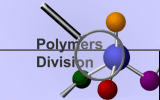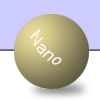
SWNT clusters are commonly seen by scattering. SANS
of labeled tubes can determine if dynamic equilibrium exchanges
tubes within the clusters,
|
SANS can use the “high concentration”
method to extract single particle scattering from mixtures and
determine if tube culsters are in dynamic equilibrium. Two samples
are prepared, one in which deuterium has replaced the hydrogen
of the structure. SWNTs themselves contain no hydrogen, however,
free radical chemistry can be used to attach alkyl groups that
supply the required hydrogen for the high contrast technique.
Scattering from concentrated mixtures have contributions
from single chain correlations, P(q), and inter-chain correlations,
Q(q). P(q) contains information on molecular mass, size, stiffness,
etc., and Q(q) contains information on clustering, ordering,
etc. For a mixture of identical SWNTs with differing contrast
factors, sH and sD, dispersed in a medium with contrast factor
sS, with a mole fraction of hydrogen and deuterium of xH and
xD I(q) is given by:
I(q) = K MW((xD(sD - sS)2
+ xH(sH - sS)2)P(q)
+(xDsD + xHsH – xS)2fQ(q)
Therefore both P(q) and Q(q) can be determined from SANS of
several mixtures.
|












